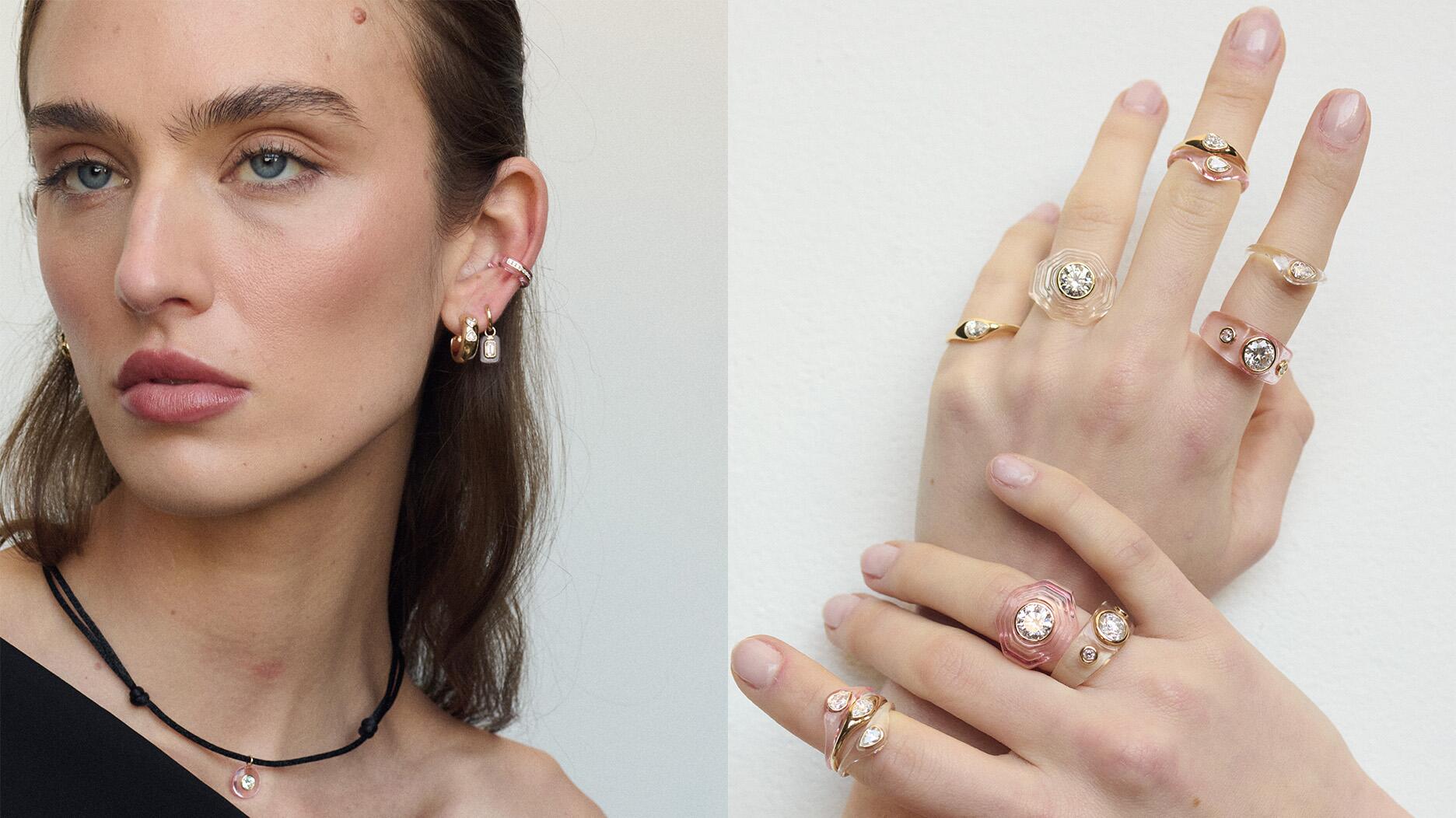Linda Coutu is rejoining the precious metals provider as its director of sales.
The End of an Era? Lab-Grown Diamonds' Journey Towards Price Stability
As the demand for lab-grown diamond jewelry may still be increasing, the most notable change we are likely to see is price stabilization.

Brought To You By Nivoda
The popularity of lab-grown diamonds has been on an upward trajectory. However, with production costs steadily declining year-on-year and concerns surrounding demand, many are prompting questions about their future in the market in the natural vs lab-grown diamond debate.
As the demand from consumers for lab-grown diamond jewelry remains strong, and may even still be increasing, the most notable change we are likely to see is the stabilization of prices. Leveraging data from our diamond marketplace, we’ve observed a consistent downward trend in lab-grown prices over time, yet a recent upward trend in Q1 2024 suggests a potential stabilization. Furthermore, it is evident that as carat weight increases, the decline in prices becomes more pronounced. The decrease in lab-grown diamond prices over time mirrors the industry's maturation, signaling its transition into mainstream acceptance.
Despite opinions that the lab-grown diamond market has reached its peak, data from our marketplace shows demand is still very much there. While it may have shifted to different segments, such as fashion jewelry, lab-grown diamonds are poised to remain a popular choice due to their affordability and versatility. This expansion into fashion jewelry not only offers consumers more accessible options for everyday wear but also provides both end consumers and designers with opportunities for creativity, all while maintaining an affordable price point.
The ongoing debate between natural and lab-grown diamonds is likely to continue but ultimately, the end consumer will decide if there is room for both to coexist in the market. With different offerings, they will be able to contribute to a more diverse market and this shouldn’t eradicate the demand for lab-grown diamond jewelry.
Nivoda’s marketplace provides both natural and lab-grown diamonds and melee, continuing to follow consumer demand trends to best support their global customer base in meeting the end consumers’ needs. Despite the stabilization in lab-grown pricing, Nivoda ensures jewelers benefit from the most competitive prices from over 1.6 million diamonds, gemstones and melee, whilst benefiting from net 30 and 60 payment terms, express delivery options and risk-free returns.
In summary, the future of lab-grown diamonds appears promising, with a potential stabilization of prices on the horizon. As the market evolves, Nivoda remains dedicated to providing unparalleled access and support to its customers, ensuring that both natural and lab-grown diamonds continue to shine brightly in the world of jewelry.
For more information on how to source lab-grown diamonds at the best prices, visit www.nivoda.com or join us at booth 58091 at JCK.
The Latest

The Signet Jewelers-owned store, which turned 100 last year, calls its new concept stores “The Edit.”

The supplier has a curated list of must-have tools for jewelers doing in-house custom work this year.

How Jewelers of America’s 20 Under 40 are leading to ensure a brighter future for the jewelry industry.

Footage of a fight breaking out in the NYC Diamond District was viewed millions of times on Instagram and Facebook.


The governing board welcomed two new members, Claire Scragg and Susan Eisen.

Sparkle with festive diamond jewelry as we celebrate the beginning of 2026.

Roseco’s 704-page catalog showcases new lab-grown diamonds, findings, tools & more—available in print or interactive digital editions.

The master jeweler, Olympian, former senator, and Korean War veteran founded the brand Nighthorse Jewelry.

In its annual report, Pinterest noted an increase in searches for brooches, heirloom jewelry, and ‘80s luxury.

Executive Chairman Richard Baker will take over the role as rumors swirl that a bankruptcy filing is imminent for the troubled retailer.

Mohr had just retired in June after more than two decades as Couture’s retailer liaison.

Shekhar Shah of Real Gems Inc. will serve as president of the Indian Diamond & Colorstone Association in 2026.

This year’s good luck charm features the mythical horse Pegasus, and is our first Piece of the Week of the new year.

Articles about crime, engagement rings, and a necklace worn in the World Series generated the most interest among readers.

As part of the leadership transition, Sherry Smith will take on the role of vice president of coaching strategy and development.

It marks the third time the country has headed the Kimberley Process. Ghana will serve as vice chair.

The new Bulova x Stetson designs highlight two animals often associated with the American West—the bison and the Texas Longhorn.

Its residency at Yamron Jewelers will run through May 2026.

From influential executives to innovative designers, we pay tribute to the people we said goodbye to this year.

The retailer is expanding into areas with large Indian and South Asian populations.

The Italian brand has opened its first flagship amid the peaks of the Dolomites in Madonna di Campiglio, Italy.

The new curation at the Natural History Museum of Los Angeles County showcases rare gem and mineral specimens in their uncut, natural state.

The couple pleaded guilty to concealing at least $127 million in cash transactions at its precious metals businesses.

Consumers shared concerns about prices, inflation, tariffs, trade, and politics in the survey’s write-in response section.

In February 2026, the auction house will move its headquarters to the former Steinway Hall, a neoclassical landmark on Billionaires’ Row.

The new show will take place Jan. 23-25, 2026.



























